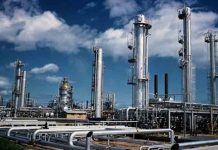Volatility on the political front which spurred a constitutional crisis may, or may not change faces at the helm, but whoever is going to take charge needs to have a transition plan to navigate through a multi-faceted crisis, compounded further by an incessant global commodity super cycle, and populist fiscally irresponsible decisions. Inflation is on a rout across the globe, whether developed market, or emerging market. Central Banks which had gotten used to close-to-zero or negative rates are now scurrying for options as supply chains go haywire, while demand reverts back to pre-pandemic levels. Pakistan is no stranger to double-digit inflation with monthly inflation (on a year-on-year basis) clocking in double-digits in almost 40 percent of the months during the last fourteen years.
Over the years, vulnerability has only increased, as the country’s dependent on imported energy, and food has only increased. Depleting energy sources locally, and increased demand due to economic growth has further increased vulnerability of our external funding position to vagaries of the global commodity market. A lopsided incentive structure in agriculture has also ensured that Pakistan continues to import the most basic of staples, including various kinds of pulses, garlic, ginger, among other items.
Inability to develop integrated supply chains, or backward integrations to ensure food security, traders continue to make hay given low elasticity of demand of many staples, which ensures that prices can be easily passed onto consumers. Increasing prices not only encroaches on an already shrinking disposable income in real terms, but also has an adverse impact on the trade balance. It is estimated that food and energy make up almost 50 percent of the goods basket which is used for calculating inflation, against an average of 35 percent for other emerging markets.
The argument for food security is often used for mandating support prices, but inability to assess production and consumption requirements often results in a scenario where there is a shortage, resulting in price increases, and eventually import of the same. If that is not enough, in case of a surplus, sometimes export subsidies are also given, all attributable to the national exchequer.
During March 2022, the UN FAO World Food Price index increased by 13 percent on a monthly basis, its largest jump in more than ten years. Increase in food prices follows increase in fertilizer prices, which have increased by more than 30 percent during the last few months. A bonanza in fertilizer prices led to smuggling of fertilizer from the country (despite it being produced through subsidized gas), pushing the government to import more fertilizer. As farm inputs increase, so will the price of final product. Ukraine and Russia, which are among the more important agricultural producers in the world may not have an exportable surplus during the next few months due to the invasion of Ukraine, and subsequent sanctions on Russia. A scamper for finite agricultural output for the year is only going to increase prices globally, and eventually locally.
Similarly, as discussed in this space last week, reluctance of the government to pass on increase in fuel prices continues to rack up subsidies at a rate of PKR 100 billion per month. The first point of agenda for any setup in the next few days would be to rationalize subsidies before it gets too late. An unintended consequence of not increasing prices was a sharp increase in demand for motor gasoline during last month, which further compounded the fiscal situation.
An increase in price of fuel would ripple through inflation numbers, with inflation potentially exceeding 15 percent on a year-on-year basis. In a few months, the second-round effects of inflation would start shaping up as producers reprice products, while consumers reconfigure their consumption requirements. To avoid a repeat of the last few months wherein the central bank was more reactive than proactive, we may see another few rounds of interest rate hikes in the next few months as the central bank may want to target a mildly positive real interest rate. With inflation at 13%+, it is anyone’s guess where interest rates ought to be. Any delay on the same may result in a downward pressure on the PKR against the USD, which would further compound our problems.
This is a bitter pill that needs to be swallowed, but after every shortage, there is a glut – after every spike, there is a fall. It is for that glut, and that fall that the policy makers need to be ready to make structural changes to the economy, which are easier said than done. Broad based subsidies only distort incentives, and do not serve those who truly deserve it. The policy makers should be looking at targeted subsidies through the Ehsaas program, such that the most vulnerable can be sheltered from the inflationary shock that may materialize during the next few months.























Nice article. Some points you missed, on international front.
1. Rate hikes by FED reserve and other first world central banks. Also FED is planning to reduce its balance sheet. Even though it is not expected to have impact this year but cause deflationary pressure in financial markets and commodities early next year.
2. LME nickel contract is broken. Other commodities like Zinc and in longterm copper contract are also at risk. Impact of such a scenario on global commodities and Pakistan.
3. Green energy policy of west and reduction of investment in new crude oil exploration projects. Its impact.
4. Gas prices in Europe and its impact on LNG prices. If europe sanctions Russian gas/crude oil?
5. Sun flower oil share of Russia and Ukraine. Its impact on vegetable oil prices. I guess both produce 80% of global sunflower oil.
6. Chinese crop failure this year.
7. Water shortage issue in our country. Impact on next crop.
Even though most of above points have medium term impact while your article is covering next quarter only.